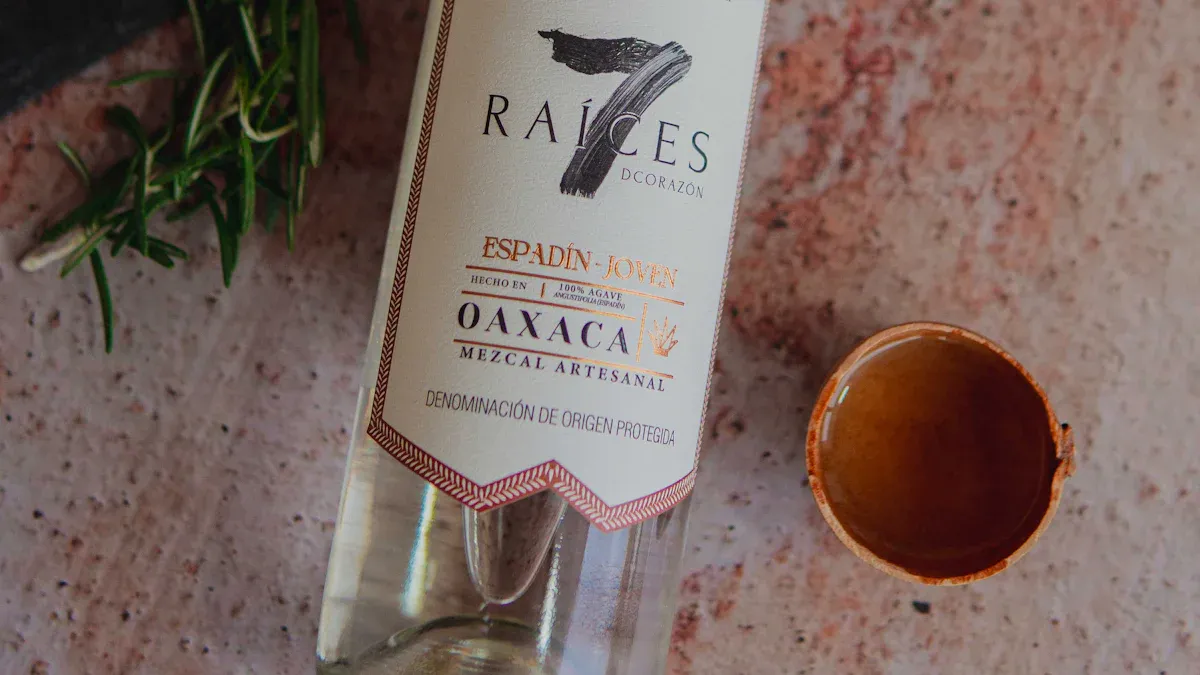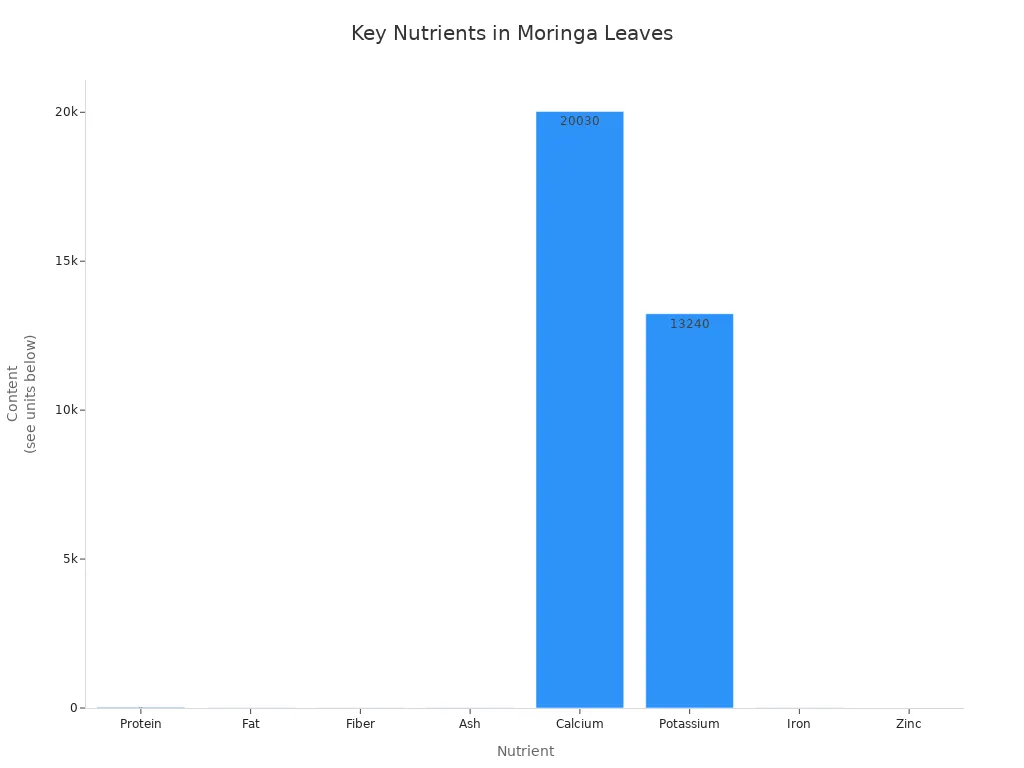T: +86-731-89865681
E: info@kingherbs.com
E: info@kingherbs.com
27Fl, Blding A, Cimen Fun City, Wanjiali Road, Changsha 410014, Hunan, China
Views: 0 Author: Site Editor Publish Time: 2025-07-14 Origin: Site
You might know the moringa horseradish tree as Moringa oleifera or the miracle tree. People call it the horseradish tree because its roots taste spicy like horseradish. Many people look for the moringa horseradish tree because it grows quickly. It can live in hard weather. It is full of nutrients. The moringa tree has more vitamin C, A, calcium, protein, potassium, and iron than many other foods. People use the moringa tree to help the immune system and to clean water. This is why it is often called a superfood.
The moringa horseradish tree is named for its spicy roots. The roots taste like horseradish because of special sulfur chemicals. This tree grows fast in warm, dry places. It does not need much care, so it is easy to grow at home. Almost every part of the moringa tree can be eaten. You can eat the leaves, pods, flowers, and seeds. All these parts have lots of nutrients. Moringa is a superfood with protein, vitamins, minerals, and antioxidants. These help your health and immune system. People use moringa in food, medicine, and beauty products. It is also used in farming. This makes it helpful for families, farmers, and businesses.
You might ask what scientists call the moringa horseradish tree. Its scientific name is Moringa oleifera. This name lets people everywhere know which plant you mean. Here is a table that shows how scientists group the moringa tree:
| Taxonomic Rank | Classification |
|---|---|
| Kingdom | Plantae |
| Clade | Tracheophytes |
| Clade | Angiosperms |
| Clade | Eudicots |
| Clade | Rosids |
| Order | Brassicales |
| Family | Moringaceae |
| Genus | Moringa |
| Species | Moringa oleifera |
| Binomial Name | Moringa oleifera Lam. |
The moringa tree is in the Moringaceae family. Its genus is Moringa, and its species is oleifera. This helps people tell the moringa horseradish tree from other plants.
The moringa horseradish tree has many names. People use different names in different places. Here are some of the most common names:
moringa
moringa tree
horseradish tree
drumstick tree
ben oil tree
benzoil tree
drumstick plant
drumstick vegetable
The word "moringa" comes from Tamil and Malayalam. These are languages spoken in India. People use these names because the tree is helpful and famous in many countries.
Tip: If you see "drumstick tree" or "drumstick vegetable" on a menu or in a store, it is probably moringa!
The moringa horseradish tree grows in many warm places. It does best in tropical and semi-arid areas. This means it likes hot weather and can live with little water. The moringa tree does not like cold or frost. It grows well in the sun and heat. You will find it in places where water is not always easy to get. Farmers in Africa, Asia, and the Mediterranean basin grow moringa oleifera. It can live through drought and poor soil.
If you live somewhere warm, you can try to grow a moringa tree. It grows quickly and does not need much care. That is why many people call it a miracle tree.
Do you know why moringa is called the horseradish tree? The reason is because of its roots. If you taste a fresh moringa root, it is spicy and sharp. It tastes a lot like horseradish. This flavor comes from special chemicals with sulfur inside the plant. Scientists call these chemicals glucosinolates. The main glucosinolate in moringa is glucomoringin. When you cut or smash the root, an enzyme named myrosinase starts working. This enzyme breaks down the glucosinolates. This makes isothiocyanates and other chemicals with sulfur. These are the same kinds of chemicals that make horseradish taste and smell strong. So, when you eat moringa root, you get that same strong, spicy taste.
Fun fact: The spicy taste from moringa roots is not just for flavor. These sulfur chemicals also help keep bugs and sickness away from the plant.
People have known about the horseradish tree for a very long time. The first stories about it are from around 2000 BC. Long ago, people in the sub-Himalayan areas of India, Pakistan, Bangladesh, and Afghanistan wrote about this plant. They used it as medicine and noticed its spicy roots. That is why they started calling it the horseradish tree. Later, people in Africa and other hot places began to use moringa too. People in these places liked the plant for its health uses and special taste. Now, moringa grows in many countries, but its story started in South Asia.
Did you know? Long ago, people used almost every part of the moringa tree, not just the roots. They thought it could help with many health problems.
When you see a moringa tree, you notice its tall, slender trunk and feathery green leaves right away. Most moringa trees grow between 9 and 12 meters tall, which is about 30 to 40 feet. Some types stay shorter and bushier, making them easier to harvest. The trunk looks whitish-gray, and the branches droop down, giving the tree an open, airy look. The leaves are small, oval, and grow in clusters. You might spot clusters of small, cream or yellowish-white flowers along the branches. These flowers smell sweet and look delicate. If you look closely, you can see the tree’s unique shape and soft, green foliage. The drumstick tree stands out in any garden or field.
You will be amazed at how fast the moringa tree grows. Under normal conditions, it can shoot up about 10 feet in just one year. If you give it the best care, it might even grow up to 20 feet in a single year! This fast growth makes the moringa tree perfect for people who want quick results. The tree loses its leaves in the dry season, but it bounces back quickly when the rain returns. You can prune the moringa tree to keep it short and bushy, which helps you harvest the leaves and pods more easily. The tree does not need much water and can survive in poor soil, so you do not have to worry much about its care.
Tip: If you want a tree that grows fast and gives you lots of healthy food, the moringa tree is a great choice!
The moringa tree is famous for its many edible parts. People in South Asia and other regions use almost every part of the tree in their cooking. The long, green pods are called drumstick vegetable. You can peel, wash, and cut them to add to curries and stews. The pods taste great and are full of nutrients. Moringa leaves are another favorite. You can toss them into salads, stir-fries, or cook them with eggs and spices. The flowers are also edible. Some people cook them with spices or brew them into tea. Even moringa seeds are useful. You can eat them or press them to make oil. The moringa tree gives you so many options for healthy meals.
Here’s a quick list of what you can eat from the moringa tree:
Moringa leaves (great in salads and stir-fries)
Drumstick vegetable pods (used in curries)
Flowers (cooked or brewed as tea)
Moringa seeds (eaten or used for oil)
Note: The moringa tree is a true superfood source. You can use it in many dishes and enjoy its health benefits every day.

People call moringa a superfood because it has many nutrients. Moringa leaves, seeds, and pods are full of good things for your body. The leaves have more protein than most other greens. They also have lots of calcium, potassium, iron, and vitamins A and C. This makes moringa a smart food if you want to eat healthy or help stop hunger.
Here’s a quick look at what you get from moringa leaves and pods:
| Nutrient / Component | Moringa Leaves | Moringa Seeds and Pods |
|---|---|---|
| Protein | High (~24.8%) | Moderate |
| Fat | 7.1% to 8.4% | Present |
| Fiber | 9.6% to 12.3% | Present |
| Calcium | Up to 20x milk | Present |
| Potassium | Up to 4x banana | Present |
| Iron | 5.18–14.10 mg/kg | Present |
| Vitamins | β-carotene, C, B6, antioxidants | Present |

That is why people call moringa the miracle tree or “mother’s best friend.” It helps families get the nutrients they need, even when food is hard to find.
You might wonder how moringa helps your health. Many studies show moringa is good for your body in many ways. It can help your immune system, lower blood sugar, and fight swelling. People use it to help with hunger and to stay strong. Here’s a table that shows some main health benefits of moringa:
| Health Benefit | Type of Evidence | Summary of Findings |
|---|---|---|
| Nutritional Content | Nutrient analysis | High in vitamins and minerals, supports daily nutrition |
| Antioxidant Properties | Lab studies | Fights oxidative stress, may lower risk of chronic diseases |
| Blood Sugar Reduction | Human and animal studies | Helps lower blood sugar levels |
| Anti-inflammatory Effects | Animal and lab studies | Reduces inflammation in the body |
| Cholesterol Lowering | Animal and some human studies | May lower LDL cholesterol and triglycerides |
| Arsenic Protection | Animal studies | May protect against arsenic toxicity |
Note: Moringa is popular because it helps people stay healthy and strong.
You can buy moringa in many forms and products. Kingherbs sells moringa powder, moringa seed oil, and other extracts. You can use these in supplements, food, skin creams, farming, and animal care. Moringa powder is easy to mix into drinks or food. Moringa seed oil is good for skin and hair products.
For people, moringa helps fight hunger and supports the immune system.
For farmers, moringa is used as animal food and natural fertilizer.
For businesses, moringa seed oil is used in beauty products and to clean water.
Kingherbs is known for its skill with plant ingredients. The company has certifications like FSSC, ISO9001, KOSHER, HACCP, and HALAL. You can trust Kingherbs’ moringa products are safe and high quality.
Moringa is useful for families, farmers, and companies all over the world.
You have learned that the moringa horseradish tree is special. Its roots taste spicy. The tree has lots of nutrients. People use it in many ways. This tree can grow where it is hard for other plants. You can eat its leaves, seeds, flowers, and roots.
Moringa leaves have protein, iron, calcium, and vitamins.
People put moringa in food, medicine, and even beauty products.
You can mix moringa powder into smoothies or salads. You can also make moringa tea. You might want to grow a moringa tree at home and enjoy what it gives you!
You might find moringa leaves taste a bit earthy and slightly bitter, like spinach. The pods taste mild and fresh. The roots taste spicy, almost like horseradish. You can add moringa to soups, salads, or smoothies for extra flavor.
Yes, you can eat moringa daily. Most people use the leaves or powder in food or drinks. Just start with small amounts. If you have health problems or take medicine, ask your doctor first.
You can mix moringa powder into smoothies, yogurt, or oatmeal. Sprinkle it on salads or soups. Some people even bake it into muffins or bread. Try a little at first to see how you like the taste.
Yes! If you live somewhere warm and sunny, you can plant moringa seeds in your garden or a big pot. Water the tree when the soil feels dry. Moringa grows fast and does not need much care.